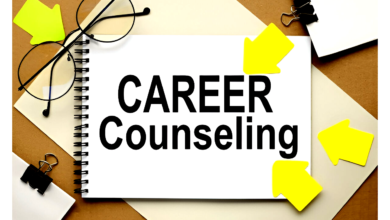Career Planning for High School Students: A Step-by-Step Guide
Career planning for high school students is a crucial process that helps young individuals shape their future and achieve their professional aspirations.

Career planning for high school students is a crucial process that helps young individuals shape their future and achieve their professional aspirations. During high school, students often begin to explore various career options, interests, and talents, making it an ideal time to start planning for life beyond graduation. With an increasing number of career paths available today, early career planning ensures students make informed decisions about their education and professional lives. Understanding their strengths, values, and long-term goals can help them avoid uncertainty and confidently work towards a fulfilling career.
By engaging in career planning early on, high school students can set realistic and achievable goals that align with their interests and skills. This process involves self-reflection, researching different career opportunities, seeking guidance from mentors, and gaining relevant experiences. A well-structured career plan not only helps students select the right college courses or vocational training but also prepares them for the challenges of the job market. In this comprehensive guide, we will walk through the essential steps of career planning to help students make informed choices about their future.
Step 1: Self-Assessment
Before choosing a career path, it is vital for high school students to understand themselves better. Self-assessment includes identifying personal interests, strengths, weaknesses, and values. Various tools such as personality tests, career assessments, and skills evaluations can help students determine potential career options that align with their natural abilities and aspirations.
Identifying Interests
Interests play a significant role in career satisfaction. Students should take time to reflect on activities they enjoy, subjects they excel in, and hobbies they are passionate about. Exploring different extracurricular activities, volunteering, or participating in clubs can help identify potential career interests.
Assessing Strengths and Weaknesses
Recognizing one’s strengths and weaknesses is essential in career planning. Some students may have strong analytical skills, making them suitable for careers in science and technology, while others may have excellent communication skills, making them ideal candidates for media or public relations roles.
Understanding Values and Work Preferences
Values such as work-life balance, financial stability, creativity, and helping others can influence career choices. Students should consider what matters most to them in a workplace environment. Some may prefer a structured corporate job, while others may thrive in a flexible or creative work setting.
Step 2: Researching Career Options
Once students have a better understanding of their interests and skills, the next step is to research potential careers. This includes exploring job descriptions, required qualifications, salary expectations, job outlook, and industry trends.
Exploring Different Career Paths
Students should explore a variety of career options within their fields of interest. This can be done through:
- Online research using career websites
- Talking to professionals in various fields
- Attending career fairs and informational sessions
Understanding Educational Requirements
Different careers require different levels of education and training. Some professions may require a college degree, while others may only need vocational training or certifications. Understanding these requirements helps students choose the right academic path.
Job Market Trends and Salary Expectations
Analyzing job market trends ensures that students choose careers with good job prospects. They should also research salary ranges to understand potential earnings in their chosen field.
Step 3: Setting Career Goals
After researching career options, students should set short-term and long-term goals to guide their journey. Goal setting provides a clear roadmap and keeps students motivated.
Short-Term Goals
Short-term goals may include:
- Maintaining good academic performance
- Gaining relevant experience through internships or part-time jobs
- Building a strong network with professionals and mentors
Long-Term Goals
Long-term goals focus on achieving career milestones, such as completing higher education, obtaining certifications, and securing a stable job. Having a vision for the future helps students remain focused and committed to their career aspirations.
Step 4: Choosing the Right Educational Path
Education plays a significant role in career success. Based on their chosen career path, students must decide whether to pursue higher education, vocational training, or apprenticeships.
College Education
For students interested in professions that require a degree, selecting the right college and major is essential. Factors to consider include:
- Accreditation and reputation of the institution
- Availability of relevant courses and programs
- Financial aid and scholarships
Vocational Training and Certifications
Not all careers require a college degree. Vocational schools offer specialized training in fields such as healthcare, technology, and skilled trades, leading to industry-recognized certifications and job opportunities.
Apprenticeships and On-the-Job Training
Some careers, such as skilled trades and technical fields, offer apprenticeships that allow students to gain practical experience while earning a wage. This hands-on training can be an excellent alternative to traditional education.
Step 5: Gaining Experience and Building Skills
Practical experience is invaluable in career development. High school students should seek opportunities to build relevant skills and gain real-world experience.
Internships and Part-Time Jobs
Internships provide exposure to professional work environments and allow students to develop industry-specific skills. Part-time jobs also help build a strong work ethic and improve time management skills.
Volunteering and Extracurricular Activities
Volunteering enhances leadership skills, teamwork, and communication abilities. Participation in extracurricular activities, such as debate clubs or student organizations, also provides valuable experience.
Developing Soft Skills
In addition to technical skills, soft skills like communication, problem-solving, and adaptability are crucial for career success. Engaging in teamwork, public speaking, and leadership activities can help students develop these essential skills.
Step 6: Seeking Guidance and Mentorship
Having the right guidance can make a significant difference in career planning. Students should seek mentorship from teachers, career counselors, and professionals in their field of interest.
Consulting Career Counselors
High school career counselors can provide insights into different career paths, educational requirements, and job opportunities. They can also assist students with college applications and resume building.
Networking with Professionals
Building a strong network of professionals allows students to learn from experienced individuals in their chosen fields. Attending networking events and connecting with industry experts can open doors to internships and job opportunities.
Learning from Role Models
Students can draw inspiration from role models who have successfully pursued careers they are interested in. Reading biographies and listening to career journeys can provide motivation and direction.
Step 7: Preparing for College and Career Applications
The final step in career planning is preparing applications for college, jobs, or vocational programs.
Writing a Strong Resume and Cover Letter
A well-crafted resume highlights a student’s achievements, skills, and experiences. Cover letters should be tailored to specific opportunities and demonstrate enthusiasm for the role.
Preparing for Interviews
Interview skills are essential for job applications and college admissions. Students should practice answering common interview questions, maintain good body language, and research the organization they are applying to.
Exploring Financial Aid and Scholarships
Many students rely on scholarships and financial aid for higher education. Researching available options and applying for scholarships early can ease financial burdens.
Read More: Career Planning for High School Students: Setting the Foundation for Success
Conclusion
Career planning is an essential process for high school students to navigate their future with confidence. By assessing their interests and strengths, exploring career options, setting goals, gaining experience, and seeking guidance, students can make informed decisions that align with their aspirations. With proper planning and perseverance, they can embark on a fulfilling career path that brings personal and professional satisfaction.
FAQs
1. Why is career planning important for high school students?
Career planning helps students make informed decisions about their future, choose the right educational path, and prepare for job market demands.
2. When should high school students start career planning?
Students should start exploring career options as early as possible, ideally in their freshman or sophomore year, to have ample time for research and preparation.
3. How can students gain experience while in high school?
They can participate in internships, part-time jobs, volunteering, extracurricular activities, and networking events to build relevant skills and experience.
4. What if a student is unsure about their career choice?
Students can take career assessments, seek guidance from mentors, explore different fields, and remain open to new opportunities before making a decision.
5. How can parents support their child’s career planning?
Parents can provide encouragement, help with research, connect students with professionals, and support them in developing necessary skills and confidence.
By following this step-by-step guide, high school students can successfully plan their careers and embark on a path that aligns with their interests, skills, and aspirations.







